Introduction
Corvettes are, yesterday like now, small warships designed for coastal defense or escort roles. They typically have a smaller displacement than frigates and destroyers. The Soviet Navy mass-built them while searching what role to give them, and the new Russian Navy has developed and deployed various corvettes over the years. The initial approach was a complement in ASW warfare and given the suddden fear of US nuclear sumbarines and their supposed unlimited speed, the Poti class, early adopters for the M2 gas turbine, were the fastest ASW ship ever built so far, caopable on trials, light to even reach 39 knots. They presented themselves as a cheaper alternative to the contemporary Mirka/Petya class.
But their armament was still WW2-flavoured and sonars suite a bit archaic. They were also seen as an experiment. Radical changes in approaches led to design later a class of multirole corvette that looked like an overgrown fast attack craft: The nanuchka class. They looked like a stubby, bloated fast boat loaded with armaments more related to cruisers than such a small vessel. And with this package, they seemed to be the perfect intermedediate coastal combat ship, which could assume defensive role whereas the new ships developed for oceanic operations in the 1970s of the Moskva/Kiev/Kirov generation would project power aboard.
The next class, Tarantul and Pauk, were an evolution of this concept, until the 1980s. But a design built by East Germany in the late 1970s-80s, the Parchim class, would have a lot of influence. Some were reverse built for the Soviet Navy and this led to the contruction of a massive class of more austere but better balanced vessel (notably for electronic interference for weapons systems), the Grisha class, which form the base of today’s Russian corvettes in development. At the same time, USSR marketed its ship and met export sucesses with these, as they were versatile and cheap.
Nomenclature
 Poti class corvettes (Project 204; 1961-68)
Poti class corvettes (Project 204; 1961-68)
66 ships: MPK-1 to 136 (random numbers)
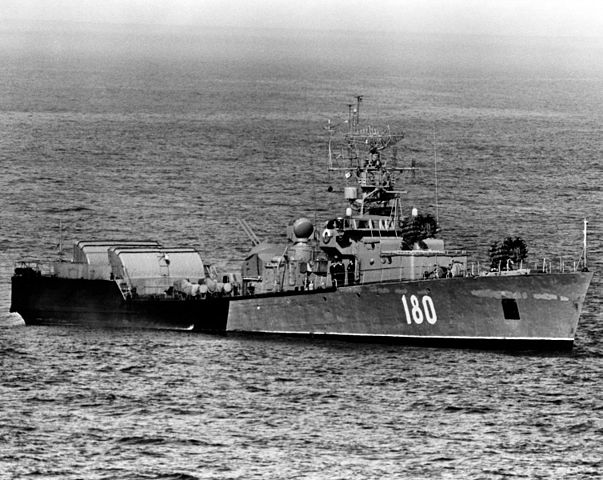
Built in Khabarovsk, Zelenodolsk and Kerch, these 66 units (project 204) were specialized in coastal ASW control and cheaper than the class Petya or Mirka frigates. They had new M2 gas turbines, giving them 38 knots, the best speed ever recorded by a Soviet ship of this type. The vents of these turbines exceeded the stern structure, which also housed two ASM grenades bins. The first units (there is no Poti I or Poti II) were equipped with the open version of the twin 57 mm AA, and two ASW rocket launchers type RBU 2500. They also had 4 ASW torpedo tubes (fixed) 406 mm, replaced on the three units delivered in 1937 to Romania by standard heavy torpedo 533 mm TTs. Three other units were delivered to Bulgaria in 1973.
Accurate information on the fate of these ships is scarce, but it appears that all units (except those transferred) were in service in 1980. In 1990, this appears to be more than half. For example, on the website of the Black Sea Fleet, http://flot.sevastopol.info/eng/ship/aswcorvettes/, it appears that 17 units were in service in 1981-90 (including one until 1975), and as a result, there were only 12 in service in 1990, and only 2 in 1998. There are none at present.
These were the first large Soviet gas turbine warships with the new M-2 engine for 38kts and fastest Soviet ASW ships ever built, with propellers in thrust tubes, exhaust through ports above them in the transom, as well as air compressors for added thrust.
Modernizations: In 1970, MPK-150 received the VGS-2 Oka-M sonar, MPK-74 and MPK-83 the MG-7 Braslet sonar, MPK-74 two UB-16-57UMP decoy launchers and two PK-16 decoy launchers

Poti class illustration
SPECIFICATIONS
Displacement: 500, 580t FL
Dimensions: 59.4 x 7.9 x 2 m.
Propulsion: 2 propellers, 2 CODAG turbines, 30,000 hp, 2 diesel 8000 hp, 38 knots max.
Crew: 80
Electronics: Strut Curve Radar, Cob Muff, Spin Through, Herkules Sonar, 2 CME Watch Dog.
Armament: 2 guns 57 mm DE (1×2), 2 LR RBU 6000, 2 ASM grenades banks (12), 4 TLT 406 mm ASM.
 Nanuchka class corvettes (1968)
Nanuchka class corvettes (1968)
Project 1234 Ovod – 35 ships 1968-75 -Nanuchka I-IV
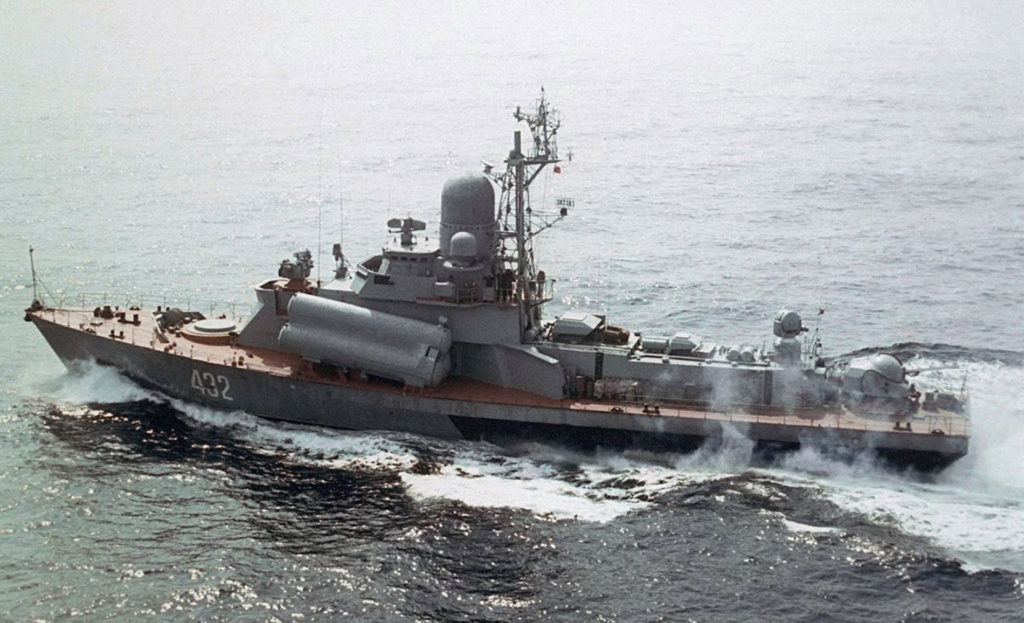
Built in Ulis (Vladivostok) and Petrovsky (Leningrad), they were 35 multirole corvettes (17 Nanuchka I and 17 Nanuchka III), not including the Nanuchka II export (7 for Libya and Algeria), but the only prototype Nanuchka IV in 1976. These units, from Project 1234 Ovod, were classified as coastal vessels similar to massive missile launchers (500 tons). They also had the look. But they also had an arsenal of ships of a much higher tonnage, with anti-ship capabilities (6 SS-N-9), anti-aircraft (SA-N-4 silo, guns 57 or 76 mm, Gatling missile 30 mm), but not ASM.
They were also long-range vessels, since those of the Black Sea were frequently observed in the Mediterranean. The SS-N-9 missile was new and still secret, so the exported versions had instead only SS-N-2C and the adapted radar, the new Square Tail. Nanuchka III differs from Nanuchka I in adopting a single 75mm AA gun and a 30mm missile Gatling with a Bass Tilt firing radar. The Nanuchka IV had two sextupled SS-N-25 ramps in special containers.
In general, the Nanuchka had serious defects: Although stable because they were wide, they were subjected to excessive pitching because they were too overload combined with a low bow, and their first M503s diesels did not gave satisfaction and deteriorated quickly. Nevertheless, these units remained in service until 1990. A number are still active now.

Author’s illustration of the Nanuchka class
Specifications
Displacement: 560, 660t FL
Dimensions: 59.3 x 12.6 x 2.4 m.
Propulsion: 3 propellers, 2 diesels, 30,000 hp, 30 knots max.
Crew: 60.
Electronics: Band Radar Stand, Peel Peer, Pop Group, Bass Tilt, 2 CME Passive Antennas, 2×16 LL.
Armament: 1 barrel 76 mm AA, 6 (2×3) SS-N-9 AN, 1×2 SA-N 4 (20), 1 of 30 mm Gatling AM.
 Tarantul class corvettes (1981)
Tarantul class corvettes (1981)
Project 205P Tarantul – 35 ships 1981-1996.
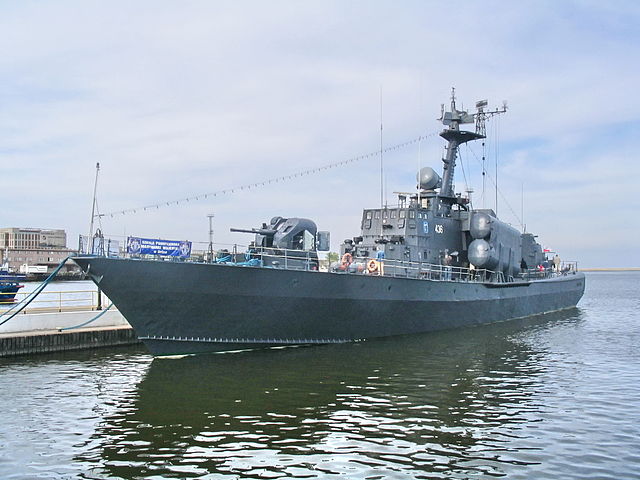
Metalowiec in Gdynia, Tarantul class Corvettes
Built at Volodarsky in Rybinsk, Petrovsky in Leningrad, Srednyy Neva in Kolpino, and Ulis (Valdivostok), they were 45 multirole corvettes (Raketny Kater, or KR), built since 1981, from 1981 to 1986 for the Tarantul II, 23 vessels, and more than 20 for export (Tarantul I). The Tarantul III are a later version for the Soviet fleet. The Almaz design office started to work on these ships as early as 1970. At that time, it was necessary to study a replacement for Osa and Komar. More marine capabilities, more autonomy, and above all armament, were required, and the quadrature of the circle could only be solved by an extension of dimensions and tonnage. As a result, the Tarantuls (project 1241) have moved from large FACs to corvette status.
These studies led to the design of a launching vessel around the new SS-N-22 anti-ship missiles, developed in parallel for the Sovremennyy. But the latter was only ready for the Tarantul III in 1985. The first Tarantul II and I export had to be satisfied with an improved version of the SS-N-2C ‘Styx.’ As intermediate ships between stars and small corvettes, the tarantul have a hull specially designed for high speeds, neither manoeuvrable nor spacious, and the lack of oil bunkerage onboard limited autonomy.
In theory, their huge CODAG machinery allowed them to reach 43 knots (under sea trials), but peak speed in normal condition was 41 knots. The diesels made it possible to restore a certain autonomy. In 1990, there were approximately 45 units still, which remained in service until 1990. Several were sold abroad, to India (7), GDR (5), Poland (7), Yemen (2). They also served with Bulgaria, Romania, Turkmenistan post 1990, Vietnam, Nicaragua and Yemen. India subsequently acquired the building licence and started a series of 23 units.
They were declined into the Project 1241.1 (NATO: Tarantul-II) soviet variant, Project 1241.RE (NATO: Tarantul-I) export variant, Project 12411 (1241.1M/1241.1MR) (NATO: Tarantul-III/Tarantul-III Mod) with new CODAG propulsion (export and deomestic) and the 1990s Project 1242.1/1241.8 ‘Molniya’ for export, with Vietnam as main user.
The Tarantul IVs succeeded them, equipped with new anti-missile systems of the CADS N-1 type, and SS-N-25 missiles, more effective and longer range than the “Styx”. They are not currently in production, but inspired the Pauk In 1994, these 25 vessels were in service (23 Tarantul II and 2 Tarantul I kept as training ships), but in 2000, there were only 18 left, and 23 Tarantul III. would remain only 5 Tarantul II and 1 Tarantul I, and 20 Tarantul III. Today, the Russian Navy still commissioned 21 modernized vessels.

Author’s illustration of the Tarantul
Specifications
Displacement: 480, 540t FL
Dimensions: 56 x 10.5 x 2.5 m.
Propulsion: 2 propellers, 2 CODAG turbines, 12,000 + 8,000 hp, 41 knots max.
Crew: 50.
Electronics: Sprint Through Radar, Bass Tilt, 1 targeting radar, 4 passive CME antennas, 2×16 LL.
Armament: 1 barrel 76 mm AA, 4 (2×3) SS-N-2 C, 1×4 SA-N 5 (8), 2 guns of 30 mm Gatling AM.
Note: No list here as all ships are numbered after “R” and the numerals are completely random, roughly from R-2 to R-312 with no correlation and intermediate numbers as to better confuse NATO analysts. Recently, one of the project 12411 boats, assigned to the Black Sea fleet (three) named R-334, №211 (launched 28.07.1989, comp. 30.12.1989 and renamed from 29.10.1998 Ivanovets had been sunk 01/02/2024 by Ukrainian drones.
 PAUK class corvettes (1977)
PAUK class corvettes (1977)
Project 1241.2 Molnya – 45 ships 1977-1982
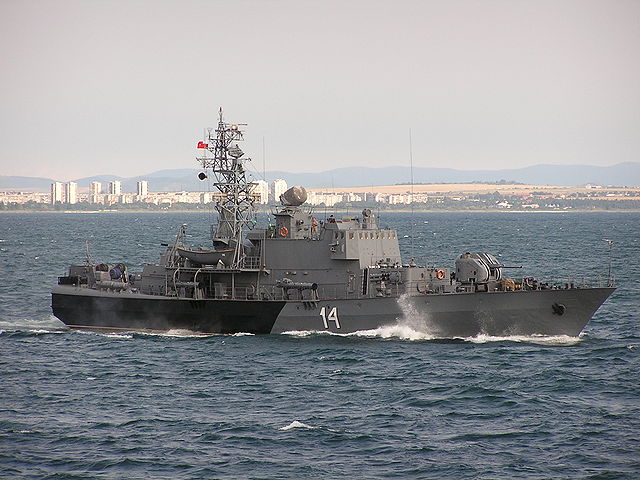
Built in Yaraslavl and Ulis (Vladivostok), they were 45 ASM corvettes (project 1241.2 Molnya-2, or Malyy Protivolodochnyy Korabl ‘MPK), quickly designed on the hull of Tarantul. The weaponry included four ASM torpedo tubes and grenades, as well as one SA-N-5 or 8 short-range quad launcher. They are ships with limited autonomy, coastal, light because their hull is made of steel but their superstructures of aluminum. There were some differences (but not Pauk II) officially, the last glimpses having a modified bridge superstructure. These vessels were defined around the Bronza hull and stern sonars and implemented a helicopter SPV at the stern. The KGB received many of these units, and others were exported: one to Cuba and Libya in 1990, two to Bulgaria, four to India, which acquired the manufacturing license. they are distinguished by their two 533 mm TLTs and a Cross Round radar. In 1990 there were still 37 in service. Figures for 2005 are unknown.

Pauk class corvettes
Exports:
Bulgarian Navy: 2 transferred in 1989/90: Bodri, Reshitelni, extant
Cuban Navy: 1 in service.
Indian Navy: 4 transferred late 1980s (Abhay class): INS Abhay, Ajay, Akshay, Agray
Ukrainian Navy: 2 transferred, U207 Uzhhorod, U208 Khmelnytskyi. Decomm. and captured.
Ukrainian Sea Guard: BG-50 Hryhoriy Kuropyatnykov, BG-51 Poltava, BG-52 Hryhoriy Hnatenko. fate unknown
Specifications
Displacement: 399, 495t PC
Dimensions: 57 x 10.2 x 2.5 m.
Propulsion: 2 propellers, 2 diesels, 20,000 hp, 35 knots max.
Crew: 36
Electronics: Spin Through Radar, Bass Tilt, 1 air-surface radar, 4 passive CME antennas, 2×16 LL.
Armament: 1x 76 mm AA, 1×4 SA-N-8, 4x TT 406 mm ASW, 1x 30 mm Gatling AM, 2x LR RBU1200 (25), 2 ASW Grenade racks.
 Grisha class (1977-1982)
Grisha class (1977-1982)
Project 1124 Al’batros – 51 ships: MPK-147, MPK-5, PK-131, MPK-133, MPK-33, MPK-47, MPK-65, MPK-3, MPK-8, MPK-43, MPK-40, MPK-138, MPK-141, MPK-152, MPK-161, MPK-2, MPK-49, MPK-52, MPK-31, MPK-127, MPK-6, MPK-36, MPK-41, MPK-117, MPK-81, MPK-122, MPK-143, MPK-145, MPK-170, MPK-4, MPK-101, MPK-155, MPK-37, MPK-178, MPK-191. Project 1124P (Grisha II): Brilliant, Zhemchug, Izumrud, Rubin, Almaz, Dnepr, Sapfir, Izmail, Provorny, Predanny, Nadezhny, Dozorny, Bditelny, Bezuprechny, Zorky, Reshitelny, Smely*, Bravy*, Verny*, Strogy*. Project 1124M (Grisha III): MPK-44, MPK-108, MPK-64, MPK-118, MPK-139, MPK-190, MPK-199, MPK-202, MPK-113, MPK-207, MPK-217, MPK-214, MPK-82, MPK-142, MPK-198, MPK-69, MPK-194, MPK-196, MPK-197, MPK-203, MPK-56, MPK-7, MPK-10, MPK-14, MPK-59, MPK-200, MPK-89, MPK-222, MPK-28, MPK-64, MPK-17, MPK-20*. Project 1124K (Grisha IV): MPK-104. Project 1124 MU (Grisha V): MPK-85, Ternopil. *not completed.
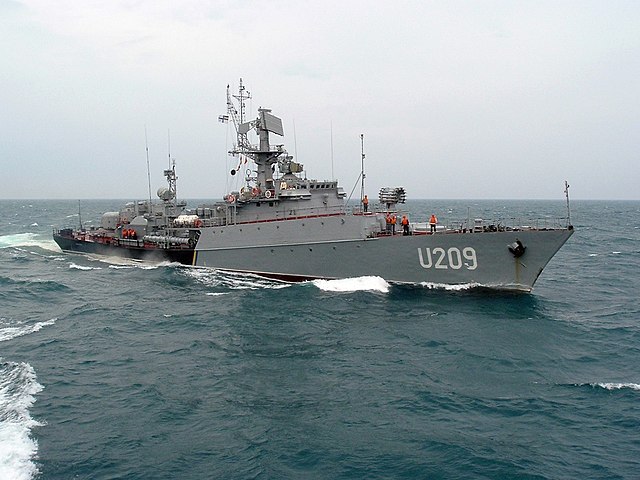
The Grisha-class corvettes were a series of small, multipurpose vessels developed and used by the Soviet Navy during the Cold War. The NATO reporting name for this class is “Grisha.” These corvettes were primarily designed for anti-submarine warfare (ASW) but also had capabilities for various other roles, such as patrol, escort, and search-and-rescue operations. They were built in multiple variants, each with its own specific modifications and improvements.
Key features:
Anti-submarine weapons and sensors, including torpedoes, depth charges, and sonar systems, allowing them to detect and engage hostile submarines.
Armament: Mix of artillery, anti-aircraft guns, and anti-ship missiles, providing a well-rounded capability for different mission profiles.
Variants: There were several variants of the Grisha-class, such as the Grisha I, Grisha II, Grisha III, and others. Each variant had improvements and modifications over its predecessor.
Service: The Grisha-class corvettes were widely used in the Soviet Navy and its successor, the Russian Navy. Some may have also been exported to other countries.

Grisha class corvettes
Specifications
Displacement: 980/1,070 tons FL
Dimensions: 71.6 x 9.8 x 3.7 m
Propulsion: 3 shaft 2 M-507A cruise diesels 20,000 shp, boost gas turbine 18,000 shp, 1 × EP 500 kW, 300 kW, 200 kW diesels,
Speed/Range: 34 knots/4,000 nm/40 kts
Crew: 60
Electronics: Don-2, Strut Curve, Pop Group, Muff Cob, Bull Nose, Elk Tail VDS, Bizan-4B/Watch Dog
Armament: 1×2 SA-N-4 Gecko, 1×2 57mm/70 AK-725, 2x RBU-6000, 2×2 533 mm TTs, 2 DCR, 18 mines
Today’s Russian corvettes
 Steregushchiy-class corvettes (2006-2026)
Steregushchiy-class corvettes (2006-2026)
Steregushchiy, Soobrazitelny, Boikiy, Hero of the Russian Federation Aldar Tsydenzhapov, Sovershennyy, Stoikiy, Gromkiy, Merkury, Strogiy, Rezkiy, Grozniy, Braviy
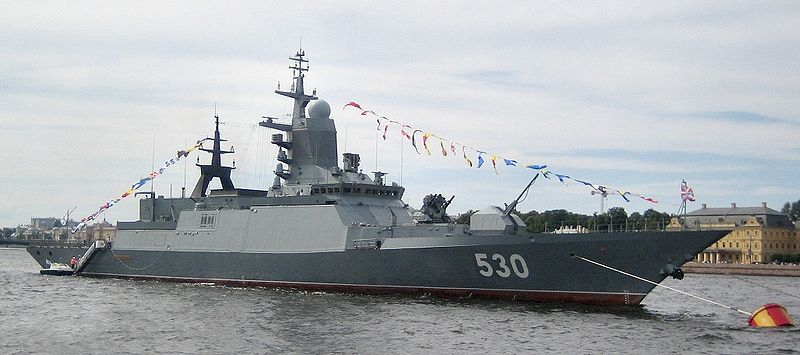
Part of the Russian Baltic Fleet, designed for anti-submarine warfare (ASW). The Steregushchiy class, Project 20380, were designed by the Almaz Central Marine Design Bureau and for Project 20381 with the Zaslon-Redut SAM system. They are large for corvettes, NATO classed them as frigates; But they were further developed into the Gremyashchiy class (Project 20385) and Project 20386. They are exported as Project 20382 Tigr.
Specs:
Displacement 1,800 tons/2,200; 104.5 x 11.6 x 3.7 m; 2 shaft CODAD, 4 Kolomna 16D49 diesels 23,664 hp380/220 V AC, 50 Hz, 4×630 kW diesel genset (17.6 MW); 27 kn RA 3,800 nmi/14 kn, crew 90
Air search radar Furke 2, later Zaslon, Granit Garpun-B/3Ts-25E/PLANK SHAVE, Monument targeting radar, Ratep 5P-10E Puma FCS, Sonar Zarya-M, Vinyetka VDS, satnav Gorizont-25, TK-25E-5 ECM, 4 x PK-10 decoy launchers. They are armed with one 100 mm A-190 Arsenal/130 mm A-192 naval gun, single Kashtan CIWS-M (Project 20380), two AK-630М CIWS (Project 20381), two quad 4 Kh-35 (SS-N-25), 12 Redut VLS cells (Project 20381), 2×4 330 mm TTs Paket-NK torpedoes and 2× 14.5 mm MTPU pedestal HMGs. Hangar for Ka-27 Helicopter and UAV Orlan-10.
 Buryan class corvettes (2005-ongoing)
Buryan class corvettes (2005-ongoing)
Project 21630 Buyan: strakhan, Volgodonsk, Makhachkala. Project 21631 Buyan-M: Grad Sviyazhsk, Uglich, Velikiy Ustyug, Zelenyy Dol, Serpukhov, Vyshniy Volochyok, Orekhovo-Zuyevo, Ingushetiya, Grayvoron, Tarusa, Naro-Fominsk, Stavropol
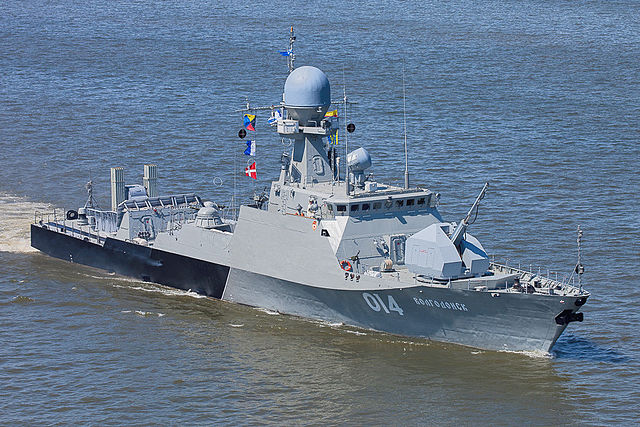
The Buyan class (Russian: Буян, lit. ’Buyan’), Russian designations Project 21630 Buyan and Project 21631 Buyan-M, are series of corvettes (small artillery and missile ships in Russian classification) developed by Zelenodolsk Design Bureau for the Russian Navy. Since 2010, all subsequent vessels are being constructed as improved Project 21631 subclass, incorporating greater tonnage, stealth technology and the 3S14 vertical launching system for either Kalibr or Oniks anti-ship cruise missiles, significantly enhancing combat capabilities. The ships are primarily designed for operations within littoral zones to protect Russia’s vast coastal areas. Due to the small tonnage, they can operate even within shallow parts of oceans and seas and Russia’s extensive inland waterway system. The export variant is known as Project 21632 Tornado.
These corvettes are known for their versatility and are capable of carrying Kalibr cruise missiles. They are designed for littoral zone operations, making them suitable for coastal defense.
Specs (* Burya-M):
500/949t FL; 62/75* x 9.6/11* x 2/2.5* m, 2 shaft CODAD, 4 x Zvezda M520, 14,584 shp (10,880 kW) and Kolomna Diesel, Pumpjet 28/26* knots, 1,500/2,300* nmi/12 kts crew 29-36/52*. Radars 5P-26M Pozitiv-M, MR-231 nav. 5P-10-03 Laska FCS, МР-123 FCS, Anapa-M sonar or Pozitiv-M1, MP-231-2, МР-123-02* 2× 10 PK-10 decoy, TK-25 radar jammers*
Buryan: 1× 100 mm A-190-01 gun, 2× 30 mm AK-630 CIWS, 20x 122 mm retractable A-215 “Grad-M”, 1× 4 3M47 Gibka SAM, 1×10 55 mm DP-65 grenade launcher, 2× 14.5 mm KPV HMGs.
Buyan-M: Same but AK-630-M2 CIWS, Pantsir-M CIWS (Stavropol only), 2×4 UKSK VLS Kalibr/Oniks, 2×4 Komar SAM
 Karakurt-class corvettes (2015)
Karakurt-class corvettes (2015)
Mytishchi, Sovetsk, Kozelsk, Tsiklon, Odintsovo, Askold, Kaluga, Okhotsk, Amur, Vikhr, Tucha, Rzhev, Udomlya, Taifun, Ussuriysk, Pavlovsk, + 2 more 2017-today
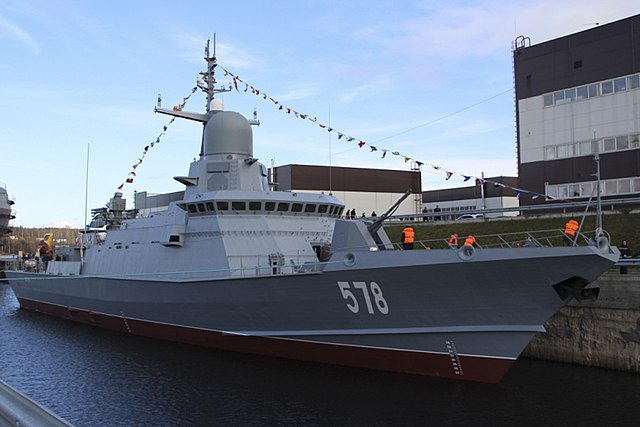
The Karakurt class (Project 22800 “European Black Widow”) is the latest type of corvette in Russian service, since 2018. It was made more seaworthy than the smaller Buyan-M-class corvettes and better armed, with Kalibr or Oniks anti-ship cruise missiles. They could replace the larger Admiral Grigorovich-class frigates, delayed due all cooperation stopped with Ukraine. Yet still, the Karakurt were also delayed due to domestically-produced engines issues and international sanctions, some shiops being built at Feodosia, Crimea. This is a more recent class of corvettes designed to carry cruise missiles and other advanced weaponry. They are part of the Russian Navy’s efforts to modernize its fleet.
Specifications: 800 tons/860 tons, 67 x 11 x 3.3 m; 3 shafts CODAD Zvezda M-507D1 112c/16D49 16D500 12V ZE1600KZ diesels and diesel generators DGAS-315, 30 knots RA 2,500 nmi. Crew 50–70. Radars Mineral-M, Pozitiv-M 1.2 3D, AESA Pal-N-4 5P-10-03 Laska FCS, SP-520, Lanzor KT-216, PK-10, MP-405-1, satcom Tsentavr-NM.
Armament 1x 76.2 mm/59 AK-176MA/100 mm A-190, Pantsir-M CIWS+ Hermes-K missiles or 3M89 Palash/Palma CIWS +Sosna-R missiles or 2× AK-630M-2 CIWS, 2×4 UKSK VLS cells Kalibr/Oniks, 2x 12.7 NSV Kord HMG, Orlan-10 UAV.
Repartition today
As of today corvettes are the bulk of Russian fleets, here is a quick overview:
Baltic Fleet:
Steregushchiy-class multi-role corvette (4)
Buyan-M-class corvette (3)
Karakurt-class corvette (3)
Tarantul-class corvette (6)
Nanuchka-class corvette (4)
Parchim-class corvette (6)
Black Sea fleet:
Steregushchiy-class multi-role corvette (1 deployed in the Baltic as of 2023)[38]
Buyan-M-class corvette (4)
Karakurt-class corvette (1, plus one on sea trials)[39][40]
Bykov-class corvette/offshore patrol ship (4)
Tarantul-class corvette (4)
Bora-class corvette (2)
Grisha-class corvette (6)
Caspian Flotilla:
Buyan-class corvette (3)
Buyan-M-class corvette (3)
Tarantul-class corvette (1)
Pacific Fleet:
Steregushchiy-class multi-role corvette (3, plus 1 in sea trials)
Gremyashchiy-class multi-role corvette (1)
Tarantul-class corvette (10)
Grisha-class corvette (8)
Nanuchka-class corvette (1-3)
Read More/Src
Books
Links
https://www.navypedia.org/ships/russia/ru_es.htm
https://www.navypedia.org/ships/russia/ru_es_mpk15.htm
https://en.wikipedia.org/wiki/Parchim-class_corvette
https://en.wikipedia.org/wiki/Grisha-class_corvette
https://en.wikipedia.org/wiki/Nanuchka-class_corvette
https://www.navypedia.org/ships/russia/ru_es.htm
https://en.wikipedia.org/wiki/Russian_Navy
http://russianships.info/eng/warfareboats/project_12411.htm

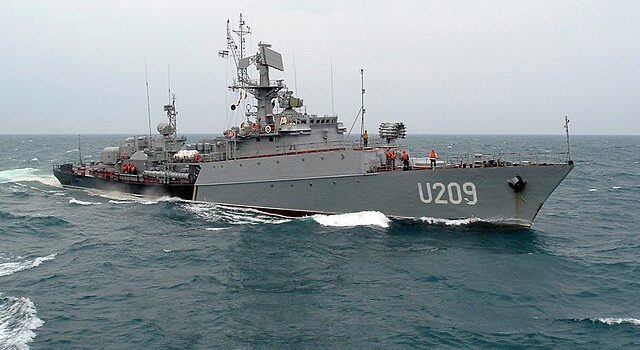

 Latest Facebook Entry -
Latest Facebook Entry -  X(Tweeter) Naval Encyclopedia's deck archive
X(Tweeter) Naval Encyclopedia's deck archive Instagram (@navalencyc)
Instagram (@navalencyc)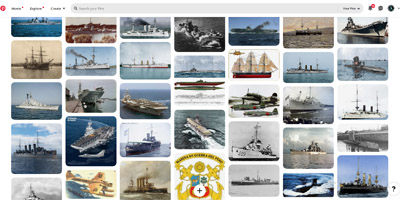


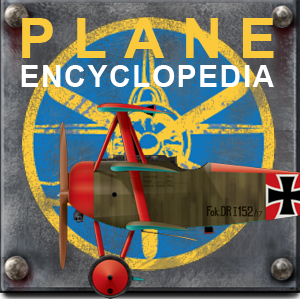
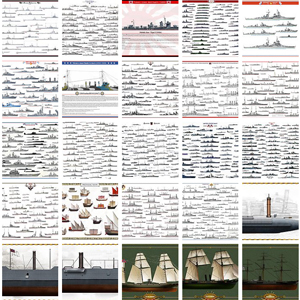
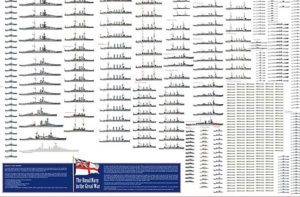
 French Navy
French Navy Royal Navy
Royal Navy Russian Navy
Russian Navy Armada Espanola
Armada Espanola Austrian Navy
Austrian Navy K.u.K. Kriegsmarine
K.u.K. Kriegsmarine Dansk Marine
Dansk Marine Nautiko Hellenon
Nautiko Hellenon Koninklije Marine 1870
Koninklije Marine 1870 Marinha do Brasil
Marinha do Brasil Osmanlı Donanması
Osmanlı Donanması Marina Do Peru
Marina Do Peru Marinha do Portugal
Marinha do Portugal Regia Marina 1870
Regia Marina 1870 Nihhon Kaigun 1870
Nihhon Kaigun 1870 Preußische Marine 1870
Preußische Marine 1870 Russkiy Flot 1870
Russkiy Flot 1870 Svenska marinen
Svenska marinen Søværnet
Søværnet Union Navy
Union Navy Confederate Navy
Confederate Navy Armada de Argentina
Armada de Argentina Imperial Chinese Navy
Imperial Chinese Navy Marinha do Portugal
Marinha do Portugal Mexico
Mexico Kaiserliche Marine
Kaiserliche Marine 1898 US Navy
1898 US Navy Sovietskiy Flot
Sovietskiy Flot Royal Canadian Navy
Royal Canadian Navy Royal Australian Navy
Royal Australian Navy RNZN Fleet
RNZN Fleet Chinese Navy 1937
Chinese Navy 1937 Kriegsmarine
Kriegsmarine Chilean Navy
Chilean Navy Danish Navy
Danish Navy Finnish Navy
Finnish Navy Hellenic Navy
Hellenic Navy Polish Navy
Polish Navy Romanian Navy
Romanian Navy Turkish Navy
Turkish Navy Royal Yugoslav Navy
Royal Yugoslav Navy Royal Thai Navy
Royal Thai Navy Minor Navies
Minor Navies Albania
Albania Austria
Austria Belgium
Belgium Columbia
Columbia Costa Rica
Costa Rica Cuba
Cuba Czechoslovakia
Czechoslovakia Dominican Republic
Dominican Republic Haiti
Haiti Hungary
Hungary Honduras
Honduras Estonia
Estonia Iceland
Iceland Eire
Eire Equador
Equador Iran
Iran Iraq
Iraq Latvia
Latvia Liberia
Liberia Lithuania
Lithuania Mandchukuo
Mandchukuo Morocco
Morocco Nicaragua
Nicaragua Persia
Persia San Salvador
San Salvador Sarawak
Sarawak Uruguay
Uruguay Venezuela
Venezuela Zanzibar
Zanzibar Warsaw Pact Navies
Warsaw Pact Navies Bulgaria
Bulgaria Hungary
Hungary

 Bundesmarine
Bundesmarine Dutch Navy
Dutch Navy Hellenic Navy
Hellenic Navy Marina Militare
Marina Militare Yugoslav Navy
Yugoslav Navy Chinese Navy
Chinese Navy Indian Navy
Indian Navy Indonesian Navy
Indonesian Navy JMSDF
JMSDF North Korean Navy
North Korean Navy Pakistani Navy
Pakistani Navy Philippines Navy
Philippines Navy ROKN
ROKN Rep. of Singapore Navy
Rep. of Singapore Navy Taiwanese Navy
Taiwanese Navy IDF Navy
IDF Navy Saudi Navy
Saudi Navy Royal New Zealand Navy
Royal New Zealand Navy Egyptian Navy
Egyptian Navy South African Navy
South African Navy






























 Ukrainian Navy
Ukrainian Navy dbodesign
dbodesign